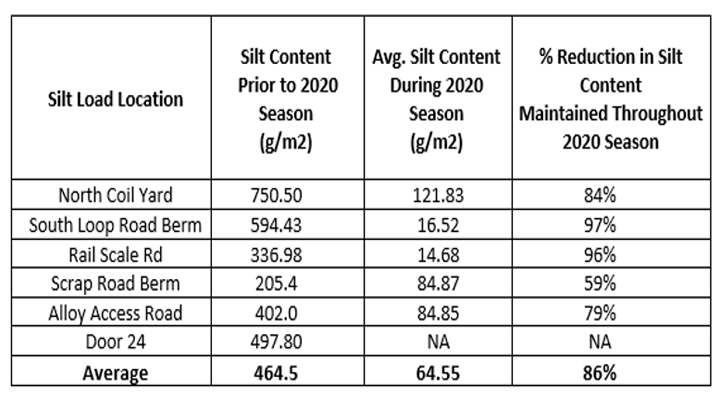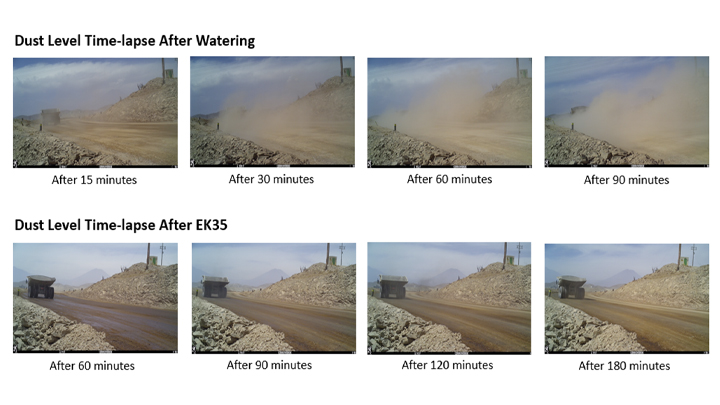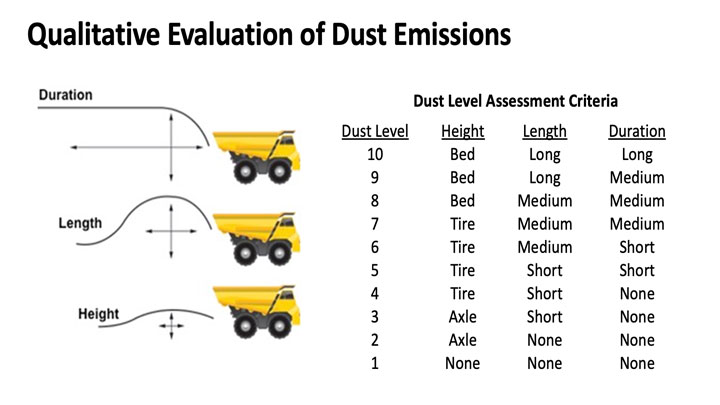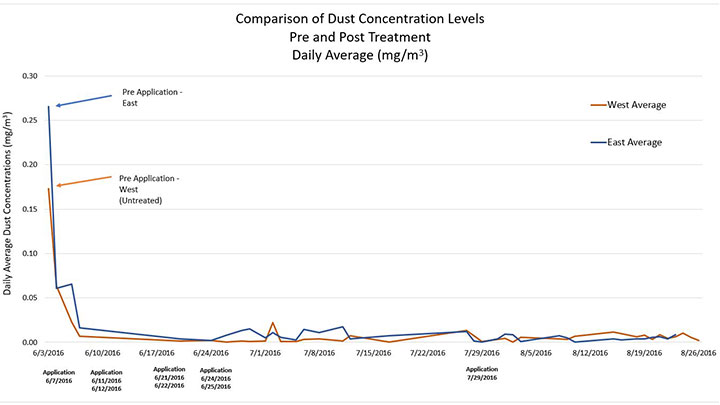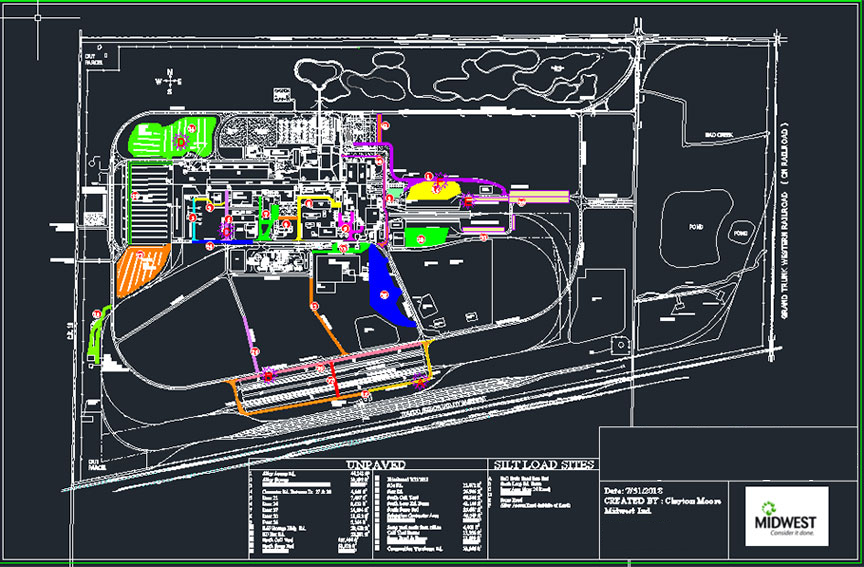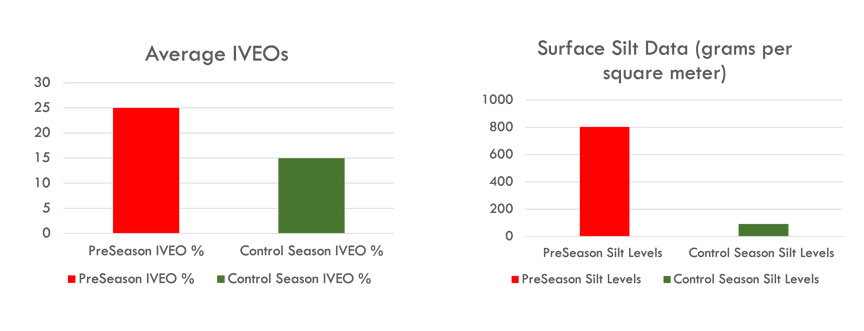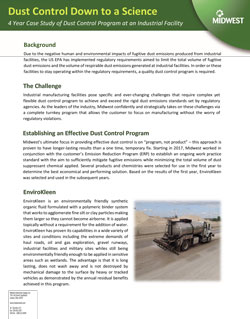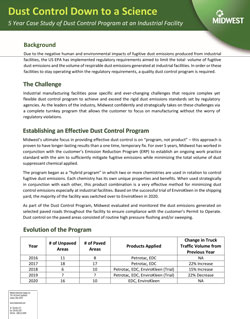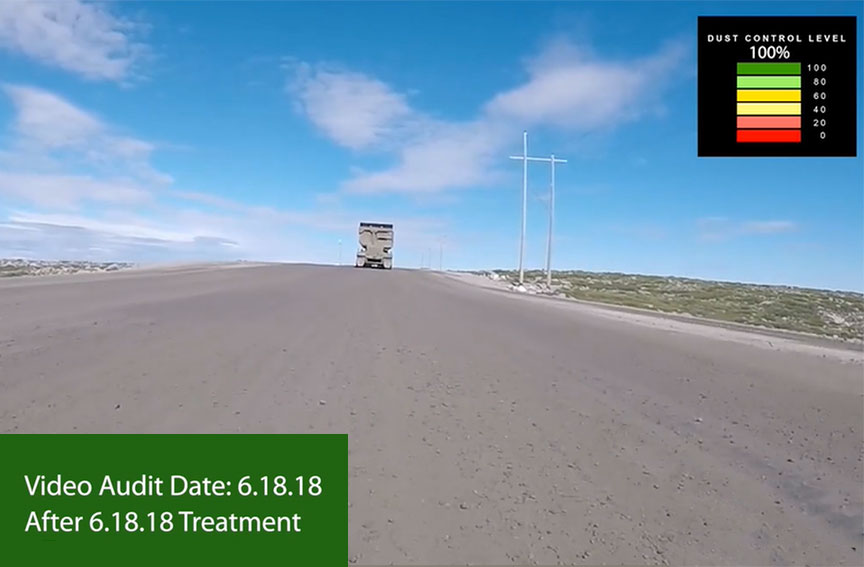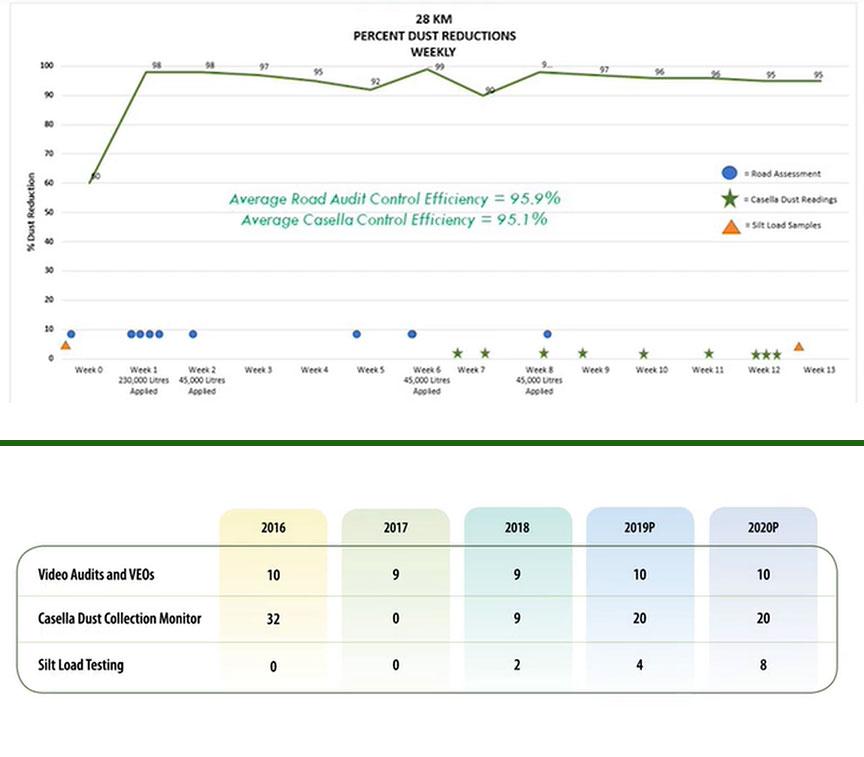Just the facts: You have a dust problem — fact. Watering doesn’t work and you pay more than you think — fact. Other ordinary dust control products are costly and limited in effectiveness — fact. Only Midwest’s site-customized full program gets dramatic, proven dust control results — fact.
Midwest deals only with facts. Our dust control programs are 100% performance-monitored and evidence-based. That’s what makes it science. We employ chemistry science, as prescribed for a particular situation, with performance predicted by statistical probability and measured by multiple accepted means designed to compare predictions to actual outcomes.
The process itself has been proven to maximize effectiveness, setting quantifiable performance standards for a specific site and designing a program to meet those standards. Let’s take a closer look at each of those facts above:
FACT: You have a dust problem.
Most major industrial operations have inherent dust issues, which is why they are required to operate within strict air quality permits such as Title V Air Quality Permits or OSHA Silica Rule. If you’re responsible for a steel mill, precast operation, quarry or mine, then you are particularly prone to particulate matter pollution. If you're a campground, vineyard, ranch, or other lighter road operation, dust can impact your visitors' health, your grapes, or your animals. And if you maintain gravel roads, you're probably exhausted from residents' complaints about the airborne dust.
FACT: Watering doesn’t work and you pay more than you think.
Compared to Midwest’s functional dust control of up to 95%, water at best is only 50%. However, water is the ultimate in temporary solutions because it evaporates quickly. Plus, the more frequent the application, the more people and machinery needed, the more congestion caused, the more runoff and unstable driving surfaces and the more road maintenance required. All this material, labor and long-term problems make a seemingly “cheap” resource like water cost more than you think.
FACT: Other dust control products are costly and limited in effectiveness.
Many companies have tried everything to control dust, from chlorides to lignin sulfonates to off-the-shelf chemicals. Either the product is toxic for the environment and corrosive to vehicles like chlorides, or it doesn’t get lasting results like lignin sulfonate products. Those that tried lignosulfonates got tired of messing with the sticky, black substance and all of the mounting costs (the chemical itself + water to dilute it + extra manhours to clean it off equipment + lost productivity navigating around tanker trucks).
FACT: Only Midwest’s site-customized full program gets proven results.
Midwest’s customers have come to expect results like up to 95% dust control and 95% reduction in water usage, up to 75% reduction in grading compared to water, better utilization of personnel and equipment, the elimination of excessive water-related operating issues requiring road maintenance — and more. Employees stay healthier, residents are happier, crops produce more abundantly and taste better — all because Midwest has dust control down to a science!
